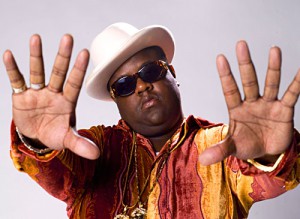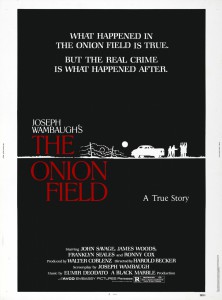03.09
Rapper Notorious BIG shot and killed in 1997
Christopher George Latore Wallace, better known as the rapper Notorious B.I.G. or Biggie Smalls was born on May 21, 1972 in New York, New York. When Wallace released his debut album Ready to Die in 1994, he became a central figure in the East Coast hip-hop scene and increased New York’s visibility at a time when West Coast artists were more common in the mainstream. The following year, Wallace led his childhood friends to chart success through his protégé group, Junior M.A.F.I.A. While recording his second album, Wallace was heavily involved in the East Coast/ West Coast feud, dominating the scene at the time. On March 9, 1997, Wallace was killed by an unknown assailant in a drive-by shooting in Los Angeles. His double-disc set Life After Death, released 15 days later, hit #1 on the U.S. album charts and was certified Diamond in 2000 (one of the few hip hop albums to receive this certification). Since his death, a further two albums have been released. His ashes were given to family and final disposition is unknown.
The Onion Field Murder (1963)
On the night of March 9, 1963, LAPD officers Ian Campbell and Karl Hettinger pulled over a car containing two suspicious-looking men on a Hollywood street. The two men, Gregory Ulas Powell and Jimmy Lee Smith (aka “Jimmy Youngblood”), had recently committed a string of robberies. Powell, the driver, pulled a gun on Campbell and ordered Hettinger to surrender his gun to Smith. The two officers were then forced into Powell’s car and driven north from Los Angeles to an onion field near Bakersfield where Campbell was fatally shot. Hettinger was able to escape, running nearly four miles to reach a farmhouse. The killing occurred primarily because Powell assumed that the kidnapping of the officers alone already constituted a capital crime under the state’s Little Lindbergh Law. However, Powell’s interpretation was incorrect, as under the Little Lindbergh Law kidnapping became a capital crime only if the victim was harmed.
Powell was arrested on the night of the murder. The following day, Smith was apprehended as well. The lead LAPD investigator on the case was Sergeant Pierce Brooks. Both suspects, convicted of murder and sentenced to death, ultimately received life-imprisonment sentences following a second trial for each, several appeals and a California court decision that found California’s death penalty to be cruel and unusual punishment.
Though Hettinger was able to escape, he felt scorned by his fellow officers and officials at the Los Angeles Police Department and suffered severe emotional trauma for both the initial incident and the following treatment. Eventually a police training video was made using his experience as example of what not to do when stopping and approaching a vehicle. Hettinger was forced to resign from the LAPD in 1966 after being accused of shoplifting. Years later, Hettinger was appointed to serve as a Kern County Supervisor for Bakersfield, California, where he served multiple consecutive terms. In 1994, he died from liver disease at the age of 59.
Smith was initially released in 1982, but returned to prison several times on drug-related parole violations. In December 2006, he failed to report to his parole officer and a warrant was issued for his arrest. In February 2007, a man matching Smith’s description was detained by police in Los Angeles’s Skid Row area and eventually identified as Smith. He was arrested and charged with violating his parole, and sent to the Pitchess Detention Center in Castaic, California. On April 7, 2007, while in that facility, he died of an apparent heart attack. Powell remains incarcerated and on October 18, 2011, the California State Parole Board denied a compassionate release for Powell, who has been diagnosed with terminal prostate cancer. The board stated that Powell did not wish to be released from prison and was likely to be uncooperative if paroled.
Officer Ian Campbell is buried at Forest Lawn Glendale.













